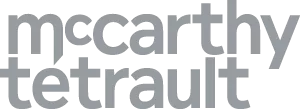- in Canada
- with readers working within the Healthcare industries
On March 9, McCarthy Tétrault and IP Osgoode jointly hosted a symposium titled Effective IP Strategy to Drive Innovation in the Financial Services Sector. This event brought together academics, business people, and lawyers for a discussion of how technological change is transforming the financial service sector and pushing incumbents and disruptors alike to think carefully about their IP strategies.
After introductory remarks from Barry Sookman and Giuseppina D'Agostino, the event set a brisk tempo and covered a lot of ground in two short hours. The discussion was organized around three panels.
The first panel, moderated by Matt Flynn and featuring Ron Stokes of Ernst & Young, Douglas Cumming of the Schulich School of Business, and Adam Nanjee, from the MaRS Discovery District, looked at trends and developments in Financial Services Technology (or "FinTech"). The panelists noted that although many established financial centres (including Toronto) have emerged (or are emerging) as FinTech "hubs", much recent investment growth is happening away from these established centres. While FinTech adoption rates have so far lagged in Canada compared to the global average, awareness and interest is high in Canada, suggesting this may change rapidly.
The umbrella term "FinTech" includes a variety of different sub-verticals, including lending and deposit, insurance, investment, payments and Enterprise services. In some of these arenas, FinTech startups hope to be vendors or service providers to established financial services incumbents; in others, they are competitors. But, either way, consumer and enterprise demand for faster, more convenient service offerings is mounting, particularly through mobile technologies. Incumbent Financial Institutions have the opportunity to maintain their current positions by focusing on the consumer experience that they deliver: an opportunity they ignore at their peril.
The second panel, moderated by Judith McKay and featuring Josh Death of TD, Ken Hobday of Fiserv, and McCarthy Tétrault's own David Tait, Lisa Melanson, and Vincent Yip, discussed the "IP Arms Race", and particularly the effect of a changing legal landscape on patentable subject matter. Ken Hobday noted that, in the wake of the Alice and Mayo decisions in the U.S., it has become much harder to obtain patents in the FinTech sector, with as many as 95% of patent applications in some sub-domains being rejected. He described this as a "good-news/bad-news" situation. It is much harder to build a FinTech patent portfolio under these conditions, but it also reduces the risk of an infringement claim from a so-called patent "troll".
Lisa Melanson noted that the legal landscape for FinTech patents is currently more favourable in Canada than in the U.S., but there are still hurdles to overcome, and patent prosecution strategies that can help. Vincent Yip explained that there are ebbs and flows in the case law, but that a robust IP strategy, considering both offensive and defensive issues, remained important. Different organizations might place different emphasis on strategic control over platform technologies, but freedom to operate is often at least as, if not more, important. David Tait explained how litigation strategy was an important part of the total IP strategy. In particular, he noted that in Canada, it is possible to bring an action to invalidate a patent before any infringement occurs, which could be a valuable strategic option to clear the field.
Josh Death broke the risk analysis down into three categories: "troll risk", "competitor risk" and "vendor risk". From his perspective, one of the most important operational risks he had to manage was the operational risk that vendor-on-vendor lawsuits might lead to injunctions against critical systems. This required careful analysis, ideally at the pre-contract stage.
The final panel focused on practical advice. Barry Sookman kicked off the discussion by noting that many financial services organizations were aware of the issues, but uncertain of how to address them.
Judith McKay described how the same kinds of trends have played out in other areas. This is not the first time that disruptive technologies have forced established companies to change the way they think about IP and innovation. She explained that in innovative sectors, the C-Suite normally has a good understanding of IP and is able to promote a culture of innovation within an organization: "Culture eats strategy for breakfast!"
Vincent Yip explained that one practical technique was to work from a gap analysis considering what IP the organization would need to use or have access to, in order to meet its business goals. After identifying what was missing, an organization can consider options to fill those gaps, including acquisitions, licensing-in, and development.
Josh Death noted the importance, as legal counsel, of communicating to the lines of business in language they understood. He recommended adopting a project-oriented approach, starting small, and building proper business cases. He repeated a point Vincent Yip had also stressed, that it was necessary to build an IP team that involved technologists who understood the business and how the technology would be commercialized, not just the legal department. Moreover, it is critical to ensure that communication flows not just up the chain, but back to the innovators and inventors within the organization, to cultivate their respect and engagement.
Ken Hobday also stressed the important role of non-legal staff in executing an IP strategy. He advocated taking a broad view, considering not just how to protect critical technology assets, but also the organization's brand. A successful IP strategy is rarely limited to patents. It also involves an organization's communications and marketing, as well as its contracting processes!
On that front, the panelists returned to the topic of managing contract risk. Judith McKay described how, in some industries, vendors simply do not offer indemnities for third party IP claims at all, or cap their liability at amounts far less than potential exposure. Furthermore, it is important to consider not just whether a vendor would attempt to defend a claim, but whether it could do so effectively in practice. As a consequence, a thorough IP diligence exercise also involves consideration of the strength of the vendor's portfolio relative to its competition. Exit rights and obligations to provide non-infringing alternatives are important mitigation tools that should not be overlooked.
Finally, the panelists considered some best practices for protecting freedom to operate. Ken Hobday stressed the defensive value of prior art. Judith McKay noted that, while it was important to assess freedom to operate up-front as part of product development, this was not a one-time analysis. It is important to re-assess changes in the marketplace and the product strategy, on a regular basis.
As this (incomplete) summary indicates, this symposium was lively, intense, and packed with practical information. McCarthy Tétrault was proud to join with IP Osgoode in hosting it.
McCarthy Tétrault has significant expertise in formulating intellectual property strategies for our clients. You can learn more about our approach by contacting any of the participating lawyers mentioned above.
The content of this article is intended to provide a general guide to the subject matter. Specialist advice should be sought about your specific circumstances.


